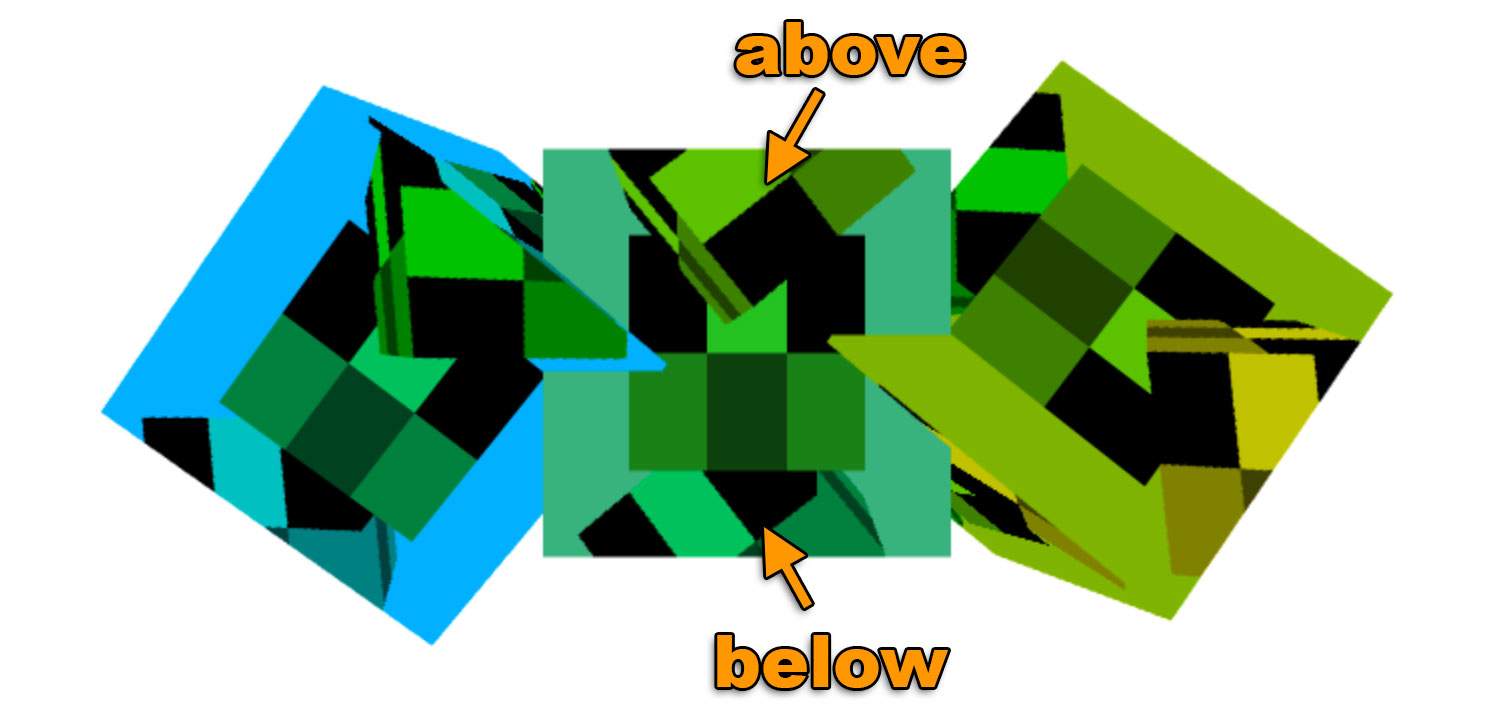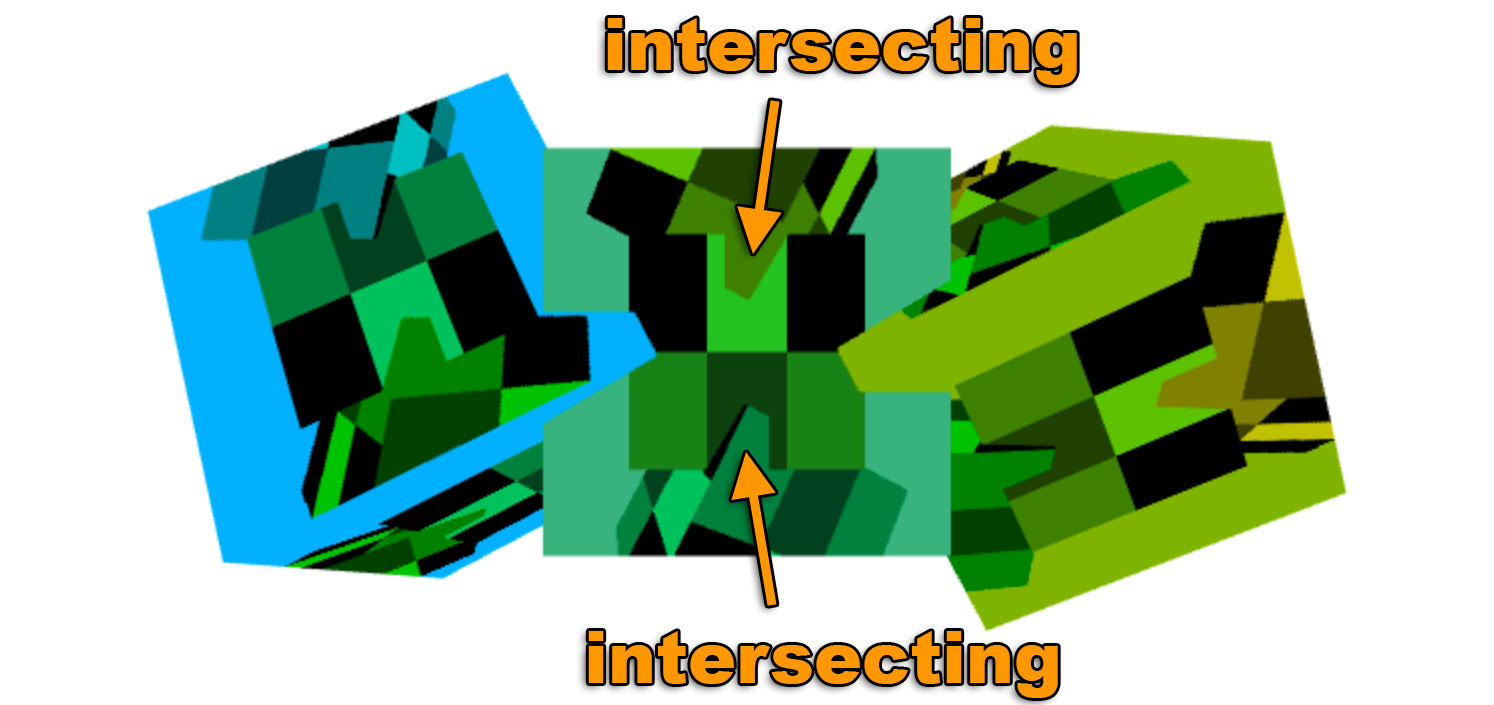WebGL2 Rendering to a Texture
This post is a continuation of a series of posts about WebGL2. The first started with fundamentals and the previous was about supplying data to textures. If you haven’t read those please view them first.
In the last post we went over how to supply data from JavaScript to textures. In this article we’ll render to textures using WebGL2. Note this topic was covered tersely under image processing but let’s cover it in more detail.
Rendering to a texture is pretty simple. We create a texture of a certain size
// create to render to
const targetTextureWidth = 256;
const targetTextureHeight = 256;
const targetTexture = gl.createTexture();
gl.bindTexture(gl.TEXTURE_2D, targetTexture);
{
// define size and format of level 0
const level = 0;
const internalFormat = gl.RGBA;
const border = 0;
const format = gl.RGBA;
const type = gl.UNSIGNED_BYTE;
const data = null;
gl.texImage2D(gl.TEXTURE_2D, level, internalFormat,
targetTextureWidth, targetTextureHeight, border,
format, type, data);
// set the filtering so we don't need mips
gl.texParameteri(gl.TEXTURE_2D, gl.TEXTURE_MIN_FILTER, gl.LINEAR);
gl.texParameteri(gl.TEXTURE_2D, gl.TEXTURE_WRAP_S, gl.CLAMP_TO_EDGE);
gl.texParameteri(gl.TEXTURE_2D, gl.TEXTURE_WRAP_T, gl.CLAMP_TO_EDGE);
}
Notice how data is null. We don’t need to supply any data. We just need WebGL to
allocate the texture.
Next we create a framebufffer. A framebuffer is just a collection of attachments. Attachments are either textures or renderbuffers. We’ve gone over textures before. Renderbuffers are very similar to textures but they support formats and options that textures don’t support. Also, unlike a texture you can’t directly use a renderbuffer as input to a shader.
Let’s create a framebuffer and attach our texture
// Create and bind the framebuffer
const fb = gl.createFramebuffer();
gl.bindFramebuffer(gl.FRAMEBUFFER, fb);
// attach the texture as the first color attachment
const attachmentPoint = gl.COLOR_ATTACHMENT0;
gl.framebufferTexture2D(
gl.FRAMEBUFFER, attachmentPoint, gl.TEXTURE_2D, targetTexture, level);
Just like textures and buffers, after we create the framebuffer we need to
bind it to the FRAMEBUFFER bind point. After that all functions related to
framebuffers reference whatever framebuffer is bound there.
With our framebuffer bound, anytime we call gl.clear, gl.drawArrays, or gl.drawElements WebGL
would render to our texture instead of the canvas.
Let’s take our previous rendering code and make it a function so we can call it twice. Once to render to the texture and again to render to the canvas.
function drawCube(aspect) {
// Tell it to use our program (pair of shaders)
gl.useProgram(program);
// Bind the attribute/buffer set we want.
gl.bindVertexArray(vao);
// Compute the projection matrix
- var aspect = gl.canvas.clientWidth / gl.canvas.clientHeight;
var projectionMatrix =
m4.perspective(fieldOfViewRadians, aspect, 1, 2000);
var cameraPosition = [0, 0, 2];
var up = [0, 1, 0];
var target = [0, 0, 0];
// Compute the camera's matrix using look at.
var cameraMatrix = m4.lookAt(cameraPosition, target, up);
// Make a view matrix from the camera matrix.
var viewMatrix = m4.inverse(cameraMatrix);
var viewProjectionMatrix = m4.multiply(projectionMatrix, viewMatrix);
var matrix = m4.xRotate(viewProjectionMatrix, modelXRotationRadians);
matrix = m4.yRotate(matrix, modelYRotationRadians);
// Set the matrix.
gl.uniformMatrix4fv(matrixLocation, false, matrix);
// Tell the shader to use texture unit 0 for u_texture
gl.uniform1i(textureLocation, 0);
// Draw the geometry.
var primitiveType = gl.TRIANGLES;
var offset = 0;
var count = 6 * 6;
gl.drawArrays(primitiveType, offset, count);
}
Note that we need to pass in the aspect for computing our projection matrix
because our target texture has a different aspect than the camera.
Here’s how we call it
// Draw the scene.
function drawScene(time) {
...
{
// render to our targetTexture by binding the framebuffer
gl.bindFramebuffer(gl.FRAMEBUFFER, fb);
// render cube with our 3x2 texture
gl.bindTexture(gl.TEXTURE_2D, texture);
// Tell WebGL how to convert from clip space to pixels
gl.viewport(0, 0, targetTextureWidth, targetTextureHeight);
// Clear the canvas AND the depth buffer.
gl.clearColor(0, 0, 1, 1); // clear to blue
gl.clear(gl.COLOR_BUFFER_BIT | gl.DEPTH_BUFFER_BIT);
const aspect = targetTextureWidth / targetTextureHeight;
drawCube(aspect)
}
{
// render to the canvas
gl.bindFramebuffer(gl.FRAMEBUFFER, null);
// render the cube with the texture we just rendered to
gl.bindTexture(gl.TEXTURE_2D, targetTexture);
// Tell WebGL how to convert from clip space to pixels
gl.viewport(0, 0, gl.canvas.width, gl.canvas.height);
// Clear the canvas AND the depth buffer.
gl.clearColor(1, 1, 1, 1); // clear to white
gl.clear(gl.COLOR_BUFFER_BIT | gl.DEPTH_BUFFER_BIT);
const aspect = gl.canvas.clientWidth / gl.canvas.clientHeight;
drawCube(aspect)
}
requestAnimationFrame(drawScene);
}
And here’s the result
It’s EXTREMELY IMPORTANT to remember to call gl.viewport and set it to
the size of the thing your rendering to. In this case the first time we’re
rendering to the texture so we set the viewport to cover the texture. The 2nd
time we’re rendering to the canvas so we set the viewport to cover the canvas.
Similarly when we compute a projection matrix
we need to use the correct aspect for thing we’re rendering to. I have lost countless
hours of debugging wondering why something is rendering funny or not rendering
at all only to finally discover that I forgot one or both calling gl.viewport
and computing the correct aspect. It’s so easy to forget that I now try to never call
gl.bindFramebuffer in my own code directly. Instead I make a function that does both
something like
function bindFramebufferAndSetViewport(fb, width, height) {
gl.bindFramebuffer(gl.FRAMEBUFFER, fb);
gl.viewport(0, 0, width, height);
}
And then I only use that function to change what I’m rendering to. That way I won’t forget.
One thing to notice is we don’t have a depth buffer on our framebuffer. We only have a texture. This means there is no depth testing and 3D won’t work. If we draw 3 cubes we can see this.
If you look at the center cube you’ll see the 3 vertical cubes draw on it one is in back, one is in the middle and another is in front but we’re drawing all 3 at the same depth. Looking that the 3 horizontal cubes draw on the canvas you’ll notice they correctly intersect each other. That’s because our framebuffer has no depth buffer but our canvas does.

To add a depth buffer we create a depth texture and attach it to our framebuffer.
// create a depth texture
const depthTexture = gl.createTexture();
gl.bindTexture(gl.TEXTURE_2D, depthTexture);
// make a depth buffer and the same size as the targetTexture
{
// define size and format of level 0
const level = 0;
const internalFormat = gl.DEPTH_COMPONENT24;
const border = 0;
const format = gl.DEPTH_COMPONENT;
const type = gl.UNSIGNED_INT;
const data = null;
gl.texImage2D(gl.TEXTURE_2D, level, internalFormat,
targetTextureWidth, targetTextureHeight, border,
format, type, data);
// set the filtering so we don't need mips
gl.texParameteri(gl.TEXTURE_2D, gl.TEXTURE_MIN_FILTER, gl.NEAREST);
gl.texParameteri(gl.TEXTURE_2D, gl.TEXTURE_MAG_FILTER, gl.NEAREST);
gl.texParameteri(gl.TEXTURE_2D, gl.TEXTURE_WRAP_S, gl.CLAMP_TO_EDGE);
gl.texParameteri(gl.TEXTURE_2D, gl.TEXTURE_WRAP_T, gl.CLAMP_TO_EDGE);
// attach the depth texture to the framebuffer
gl.framebufferTexture2D(gl.FRAMEBUFFER, gl.DEPTH_ATTACHMENT, gl.TEXTURE_2D, depthTexture, level);
}
And with that this is the result.
Now that we have a depth buffer attached to our framebuffer the inner cubes correctly intersect.

It’s important to note WebGL only promises certain combinations of attachments work. According to the spec the only guaranteed combinations of attachments are:
COLOR_ATTACHMENT0=RGBA/UNSIGNED_BYTEtextureCOLOR_ATTACHMENT0=RGBA/UNSIGNED_BYTEtexture +DEPTH_ATTACHMENT=DEPTH_COMPONENT16renderbufferCOLOR_ATTACHMENT0=RGBA/UNSIGNED_BYTEtexture +DEPTH_STENCIL_ATTACHMENT=DEPTH_STENCILrenderbuffer
For any other combinations you must check if the user’s system/gpu/driver/browser supports that combination. To check you make your framebuffer, create and attach the attachments, then call
var status = gl.checkFramebufferStatus(gl.FRAMEBUFFER);
If the status is FRAMEBUFFER_COMPLETE then that combination of attachments works for that user.
Otherwise it does not work and you’ll have to do something else like tell the user they are out of luck
or fallback to some other method.
If you haven’t yet check out simplifying WebGL with less code more fun.